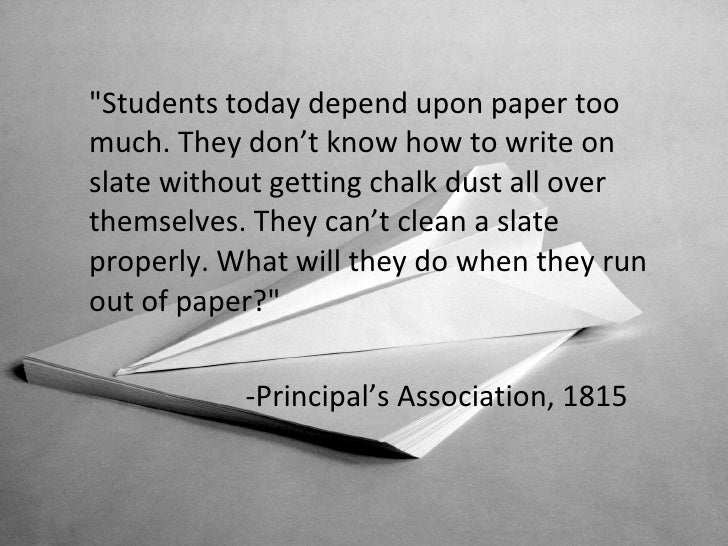The off-task behavior in the example above was glaring. I seized the opportunity to not only call the group out tactfully and with respect, but to also hammer home a few points. Adults can be just as bad, if not worse, than our students when it comes to technology. How can we as adults set expectations for device use for kids if we ourselves are not willing to abide by those same expectations? This is quite hypocritical don’t you think? Change in mindset hinges on our ability to challenge certain assumptions that we have in terms of mobile technologies. When we do, the end result is that every one of us has been guilty of the same types of behaviors that students are chastised for.
Stay with me on this as we take a walk down memory lane. I want you to think back to your days as a student before the proliferation of mobile technology. Through a series of questions I am going to not only ask you to reflect on what you did, but also in the process challenge some firmly entrenched assumptions regarding technology. Here we go!
- Did you ever write a note and pass it? Today’s students text or communicate via social media.
- Were you ever so bored in class that you doodled or daydreamed? Well, now kids check their social media accounts or use apps to engage themselves.
- Did any of you ever see someone with a cheat sheet or answers written on their hand? Now I know as educators you never did this, but I think you get my point. Obviously kids can use technology to do this now as well.
- Did you ever break any school rules that you didn't agree with? Students do this all the time when dictator-like policies and rules govern technology use.
The process of effectively integrating devices begins with our ability to model appropriate use while reinforcing student expectations for the role of mobile devices. Make sure theessential elements are in place to ensure that devices afford students the opportunity to:
- Support and/or enhance their learning
- Conduct better research
- Improve personal productivity
- Develop and model digital responsibility and citizenship
- Acquire and apply critical digital literacies
It is time to not only perform the job that we signed up for, educating kids, but also do so in a way that prepares them to harness the learning power of mobile technologies. Excusesplague education systems around the world. Stop making it about the adults and focus on what’s best for learners today.


You need to be a member of School Leadership 2.0 to add comments!
Join School Leadership 2.0